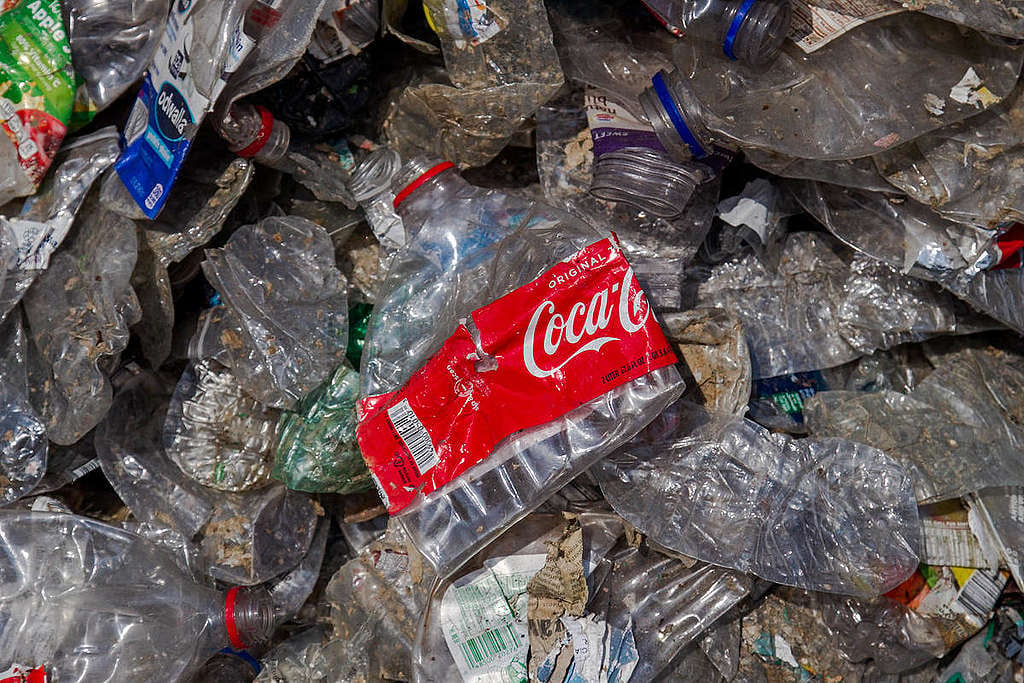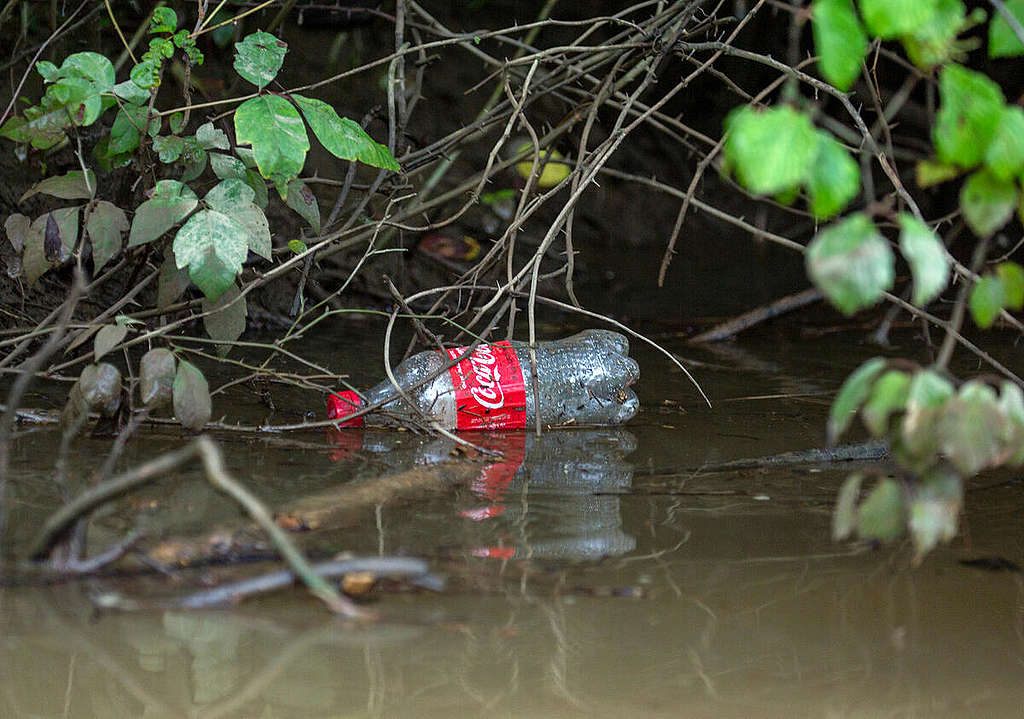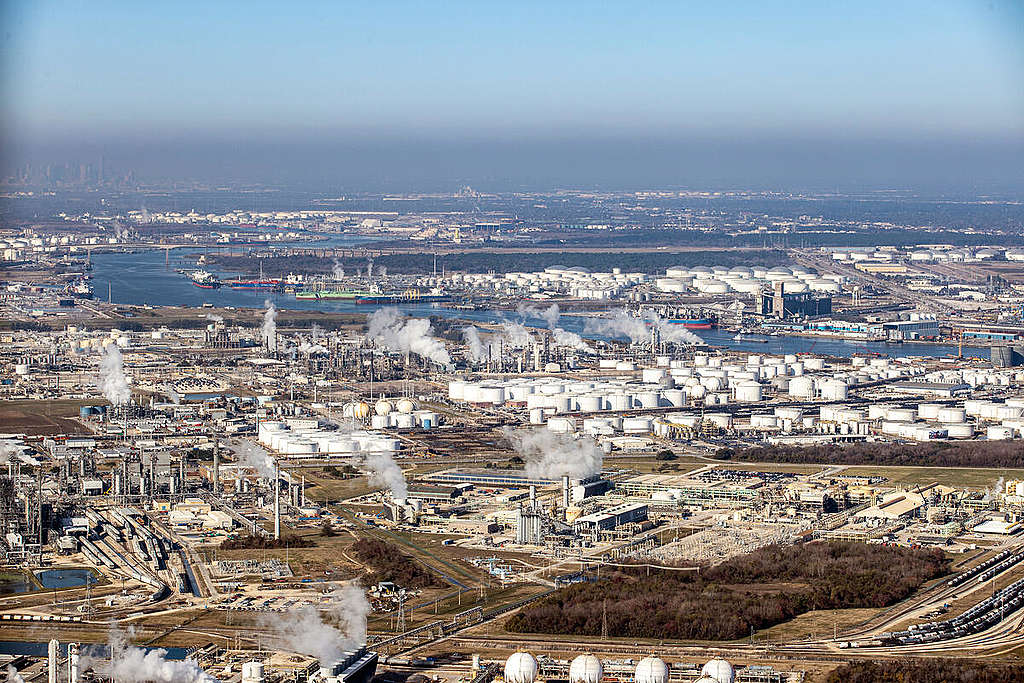Robin Flaharty
There is an old, now iconic, Coca-Cola commercial from 1971, called Hilltop or as it’s more commonly known as “I’d like to buy the world a Coke”. The video features a diverse group of young people from all over the world holding glass bottles of Coke on a pristine hilltop. In it they sing, “I’d like to buy the world a home… to buy the world a Coke and keep it company. It’s the real thing, what the world wants today.”
What’s happening
At this year’s shareholder meeting, 50 years on, Coca-Cola wants to pretend that it’s still on that hilltop, making us feel refreshed and joyful, full of nostalgia for its “classic” brand.
Meantime activists around the world are protesting loudly – pointing out that thanks to the operations of companies like Coca Cola – the hilltop is now not only littered with single use plastic bottles, but increasingly being covered over with new fossil fuel infrastructure designed to make yet more throwaway plastic. That Coca-Cola’s plastics problem is beyond being a litter and ocean problem. Plastic pollution is also a climate, health and social justice issue.

Why it matters
Few knew of the real consequences of the world Coca-Cola was setting out to build on that hilltop. The reality is, Coca-Cola has a major plastics problem and it’s threatening our personal and planetary health.
In December 2020, following global clean ups and brand audits, Coca-Cola was named the world’s worst plastic polluter for the third year in a row. That means that no matter what beach you stand on, or which city block you stroll, you are most likely to find Coke-branded plastic posing a threat to both our waterways and communities.
For decades, Coca-Cola and other consumer goods companies have relied on the myth of recycling to avoid responsibility for this pollution. They have played up recycled content as a way to continue using harmful single-use plastics, and put the onus on all of us to clean up their trash, while refusing to recognize that their plastic problem is beyond being solved by recycling or clean up initiatives.

Its plastic addiction is also feeding climate change. As the fossil fuel industry’s profitability continues to be undermined by worldwide action against greenhouse gas emissions, it has begun to see its salvation in a plastics boom – and a long-term partner in consumer goods companies like Coca-Cola. According to scientists, packaging already accounts for 40 percent of total plastic demand, and the industry would like nothing more than to increase that dependence.
If the fossil fuel industry continues to develop new extraction and processing capacity to meet the predicted plastics demand growth, society could become locked into high emissions, and the necessary 1.5 °C capstone goal to avoid the worst impacts of climate change will become impossible to meet.

What needs to happen now
So how does Coca-Cola get to that sunny hilltop? If Coca-Cola wants to show it cares about people, climate change and plastic pollution, it will immediately end its toxic relationship with the fossil fuel industry and reliance on single-use plastics.
If Coca-Cola wants to show it cares about the communities who are being hit hardest by the climate and pollution crises, it will end the production of plastics; production that disproportionately harms low income communities and communities of colour. Coca-Cola must put its money where its mouth is and invest in systems of reuse that eliminate the burden of toxic plastic pollution from these communities so they have access to cleaner air and water, and can thrive in the communities they call home.
If Coca-Cola truly wants to live up to its climate commitments, it must play no part in fuelling a planned fossil fuel petrochemical expansion that risks locking us into high emissions and the worst impacts of climate change. It must end its toxic relationship with the fossil fuel industry.
It’s time for Coca-Cola to buy into refill and reuse systems for its products. We need real solutions. It’s what the world demands today.
Robin Flaharty is Plastic Free Future campaigner with Greenpeace USA.
The video that @cocacola, @nestle and @pepsi don’t want you to see 👀
— Greenpeace (@Greenpeace) April 8, 2021
If industry has its way, plastic production could double by 2030.
Sign our petition to end-single plastic and make the big brands switch to refill and reuse >> https://t.co/9wXIcCFU0W#BreakFreeFromPlastic pic.twitter.com/cjsBSXW6gY

No comments:
Post a Comment
Note: Only a member of this blog may post a comment.